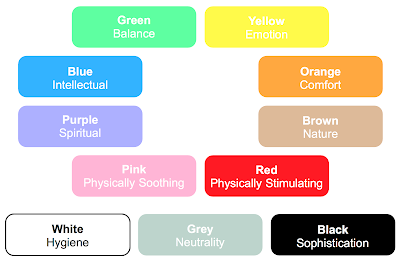- The set of basic colours which we all relate to as having characteristics, both positive and negative, and
- There are four colour families, each with a specific set of common personalities, which they relate to.
The key is that each colour family has a specific personality type. Grouping colours together from within the same colour family will always harmonise and direct the viewer in a specific common direction. Emphasising specific characteristics of the colours can then influence more directly how the viewer feels, thereby objectively influencing its psychological affect.
 |
We subconsciously associate colours with specific characteristics.
These are the reasons why bishops wear purple and pilots wear black.
Positive references for each colour are given here. For more, including potential negatives, check out Colour Affects and Angela Wright's book.
|
Through her research, Angela has confirmed that the component which defines whether a colour is stimulating or calming is not the wavelength (which defines the colour) but the chromatic intensity (the strength of the colour). For example, a strong bright blue might stimulate mentally and focus the mind, while a soft sky-blue can calm the mind and aid concentration.
 |
| Colour Family Type 2: Dream Light This colour family is subtle, delicate and cool. It has the natural characteristics of Summer. |
 |
| Colour Family Type 4: Star Light This colour group is clear, striking and can be cold. It contains no subtleties. It has the natural characteristics of Winter. |
Working with colour is a delicate art, and it helps to have a specialist on board like Angela, but with a system like this there is no reason why architects should stick to their favourite greys.
 |
| The Colour Affects book. Currently Angela is working on a new book which she aims to release next year. |


